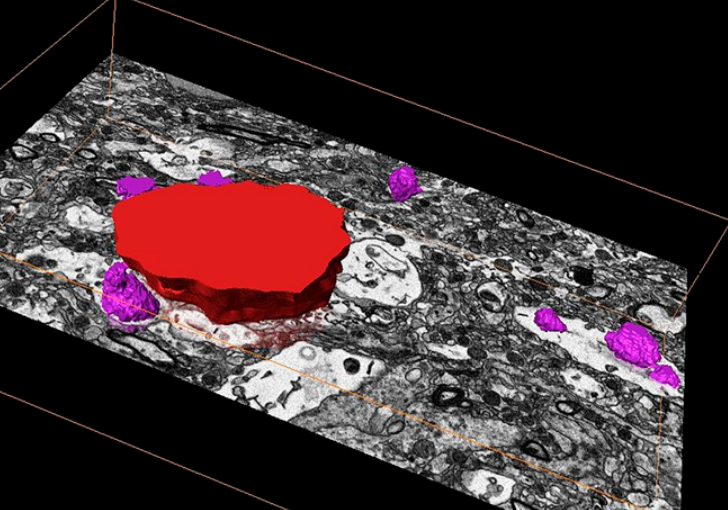Cerebral Corpora amylacea are dense membranous labyrinths containing structurally preserved cell organelles

Corpora amylacea are cell-derived structures that appear physiologically in the aged human brain. While their histological identification is straightforward, their ultrastructural composition and microenvironment at the nanoscale have remained unclear so far, as has their relevance to aging and certain disease states that involve the sequestration of toxic cellular metabolites. Here, we apply correlative serial block-face scanning electron microscopy and transmission electron tomography to gain three-dimensional insight into the ultrastructure and surrounding microenvironment of cerebral Corpora amylacea in the human brainstem and hippocampal region. We find that cerebral Corpora amylacea are composed of dense labyrinth-like sheets of lipid membranes, contain vesicles as well as morphologically preserved mitochondria, and are in close proximity to blood vessels and the glymphatic system, primarily within the cytoplasm of perivascular glial cells. Our results clarify the nature of cerebral Corpora amylaceaand provide first hints on how they may arise and develop in the aging brain.